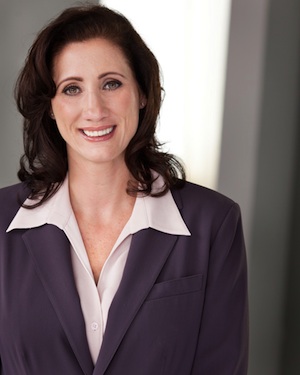
|
Janell Townsend says,
“I help students see how research can benefit their work. I
want them to understand how the conceptual frameworks and theories can
help them on the job.”
|
By Sandra Beckwith
Janell Townsend had a “moment” that reminded her of why she loves teaching college students. While in Brazil with Oakland University MBA students who were learning more about what it means to do business globally, the group stopped at a Starbucks near their hotel. One of the students was amazed that she could, without knowing how to speak Portuguese, order her favorite caramel macchiato and get the same drink she could at home. The moment offered the students a lesson about how global companies do business, but it was more than that for Townsend.
“To help create and disseminate knowledge that helps people expand their horizons or broaden the way they look at the world is the most fabulous thing about being an academic,” Townsend says.
An associate professor of marketing and international business in the School of Business Administration, Townsend does this both as an instructor and a researcher. Her research, which is usually focused on the nearby auto industry, explores the point where branding, innovation and globalization converge. While past projects have explored the global integration of brands and new-product development as well as brand expansion in international markets, much of her current research deals with domestic branding topics that have global applications.
One recent project explores the impact of a product’s design on consumer perception and the product’s performance. Another is studying how emotional values impact consumer opinions about products. A third study examines how design differences in a product influence consumer opinions and their purchasing intentions. Still a fourth is exploring a product’s “halo” effect on consumer opinions — that hard-to-define situation where positive opinions of a particular product seem to influence how people view other products from the same manufacturer.
“In the auto industry, the Corvette has a halo effect on the Chevy brand, and the Prius does the same for Toyota,” Townsend says.
On the global front, Townsend is studying how different marketing mix decisions impact sales for global products. For example, she says that to be considered a luxury brand, the product needs a global presence. To get that presence, it needs to be in the same markets as the brand’s target customers.
“A luxury brand that’s trying to establish prestige in Russia, for example, will need a presence in places like Turkey, Switzerland and the U.K., because that’s where wealthy Russians spend a great deal of time,” she explains. “If they don’t see you in all of those places, they won’t consider you a luxury brand.”
One of the challenges of doing international research, she says, is the scarcity of data.
“I like to use secondary data from the marketplace — real data — instead of experimental design,” she says, “but it’s very hard to get data from global sources.”
While her research has global implications and applications, Townsend thinks “locally.”
“It is really important for people in universities to be involved in the community,” says Townsend, who is active in both local and industry business organizations. This underlying philosophy provides the framework for sharing the results of her research with the business community. Believing that while university research is important for extending general knowledge, it is also important that it is applied in practice, Townsend:
- Publishes findings in top-tiered academic journals.
- Shares what she’s learned informally, when networking with local business people.
- Coaches business executives one-on-one, helping them discover how to use research results in their global marketing strategies.
- Shares results with industry partners who provide data for her research.
- Teaches students and industry executives to read, interpret, understand and apply what they read in academic journals.
“I help students see how research can benefit their work,” she says. “I want them to understand how the conceptual frameworks and theories can help them on the job.”
Whether she’s working with global marketers or students, Townsend enjoys it when the people she’s helping have those “aha” moments of their own. “It’s really great when somebody ‘gets it,’” she says. “That’s why research is so important. If you’re not doing research, you’re just teaching what somebody else figured out.”

